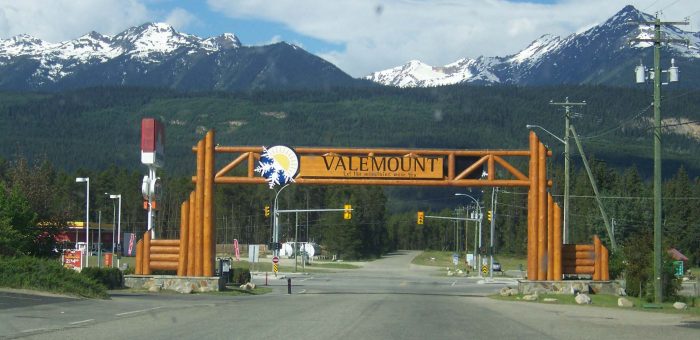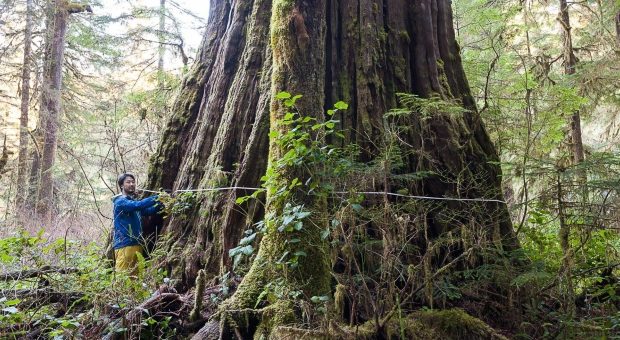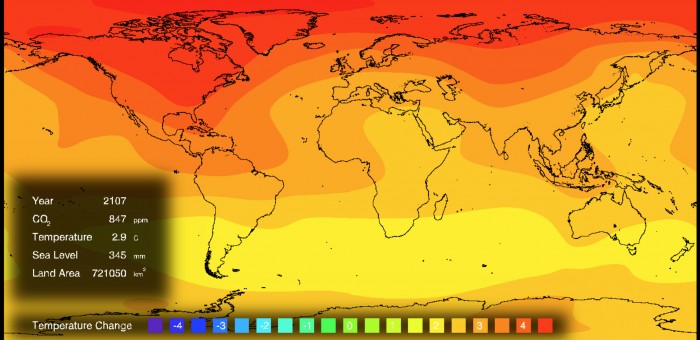Environment
Responding to Pacific Coast Climate Leadership Action Plan Update
Today, in San Francisco representatives from California, Washington, Oregon, British Columbia signed the already announced Pacific North America Climate Leadership Agreement and Action Plan. The press conference, oozing with self-congratulation and political rhetoric from our Minister of Environment, can be viewed online. Our Minister of Environment’s comments were, in my view, embarrassing. In her remarks the Minister continued to try and take credit for the Campbell administration’s past climate leadership. And the accompanying press release states:
For those needing a translation this means “we will continue our desperate attempt to land a hypothetical LNG industry and in so doing ignore the words of more than 90 international scientists who point out that this makes no sense from a greenhouse gas reduction perspective.” Climate policy, of course, gets in the way of the LNG pipedream. And so while California introduces Cap and Trade legislation, BC repeals our legislation. Here’s what climate leadership looks like under Today’s BC Liberals (who are in my humble opinion nothing more than yesterday’s Harper Tories):
- The Clean Energy Act was amended to exclude emissions from liquefaction in LNG industry;
- The Pacific Carbon Trust shut down;
- Carbon tax increase stops;
- Cap and Trade enabling legislation (designed to bring big point source emitters in with California) has been repealed;
- We have a new Greenhouse Gas Industrial Reporting and Control Act that introduces an “emissions intensity” framework straight out of Alberta’s policy;
- The LiveSmart BC program has essentially shut down;
- Emissions have gone up year after year.
Below is the media statement I released today. The banner above says it all.
Media Statement
Media Statement: June 1st, 2016
Weaver Responds to Pacific Coast Climate Leadership Action Plan Update
For Immediate Release
Victoria B.C. – “The B.C. Liberals are in no position to claim climate leadership. While they reaffirmed their commitment to the PCC action plan today, their inaction over the last three years indicates that they clearly do not take the agreement seriously,” Andrew Weaver, MLA for Oak Bay – Gordon Head and Leader of the B.C. Green Party, said of the 2016 Pacific Coast Climate Leadership Action Plan signing in San Francisco.
The Pacific Coast Collaborative (PCC) is a partnership between California, Oregon, Washington and British Columbia, who signed a non-binding climate and energy action plan in 2013. Today’s renewed commitment is said to update their previous agreement with increasingly bold goals that reflect the need for decisive climate action.
“At today’s signing Mary Polak suggested that there are not a lot of places to look to further reduce greenhouse gas emissions in B.C. because we already have the lowest rate in the country – she is false on both accounts. 40% of our household GHG emissions come from transportation, a sector with great emission-reducing potential, and Quebec is the province with the lowest per capita emissions in Canada.”
“These are the same talking points we heard in 2013. As other provinces are stepping up and getting more ambitious, the B.C. Liberals seems content to coast as we fall behind. On top of that, if the LNG sector expanded the way the government has promised our GHG emissions would skyrocket and there is no guarantee it would result in reductions anywhere else.”
“Addressing climate changes requires direct action, not more promises and photo ops.”
-30-
Media Contact
Mat Wright
Press Secretary
Email: Mat.wright@leg.bc.ca
Cell: 250 216 3382
An Exciting Opportunity for Tourism & Economic Development in Rural BC
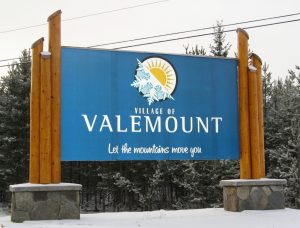 The community of Valemount is located on Southern Yellowhead Highway 5, twenty kilometres south of the intersection with Yellowhead Highway 16 that connects Prince George to Edmonton. With a population (including the surrounding area) of about 2000, Valemount, like so many other rural communities in BC, used to have a forestry-based economy. In the case of Valemount, it was the Slocan mill that was the engine of their local economy. But that mill shut down for good over a decade ago.
The community of Valemount is located on Southern Yellowhead Highway 5, twenty kilometres south of the intersection with Yellowhead Highway 16 that connects Prince George to Edmonton. With a population (including the surrounding area) of about 2000, Valemount, like so many other rural communities in BC, used to have a forestry-based economy. In the case of Valemount, it was the Slocan mill that was the engine of their local economy. But that mill shut down for good over a decade ago.
The people of Valemount and their elected Mayor and Council were resilient. Today Valemount has emerged as a tourism centre in northeastern British Columbia. And it’s about to get a whole lot more exciting.
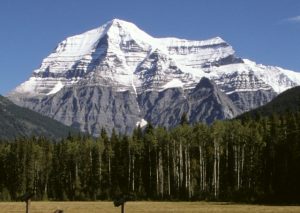 Valemount is a natural hub for ecotourism. It is a fully serviced community sitting next to Jasper National Park and Mount Robson Provincial Park. It’s also located near the head of Kinbasket Lake, created when BC Hydro’s Mica Dam was built on the Canoe River. Canoe river is the northernmost tributary within the Columbia River drainage basin. McLennan river, one of the easternmost tributaries of the Fraser River also flows along the northern edge of Valemount.
Valemount is a natural hub for ecotourism. It is a fully serviced community sitting next to Jasper National Park and Mount Robson Provincial Park. It’s also located near the head of Kinbasket Lake, created when BC Hydro’s Mica Dam was built on the Canoe River. Canoe river is the northernmost tributary within the Columbia River drainage basin. McLennan river, one of the easternmost tributaries of the Fraser River also flows along the northern edge of Valemount.
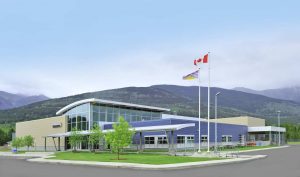 Whether it be skiing or snowshoeing in the winter or white water rafting, fishing, hiking or even golfing in the summer, Valemount has a diverse array of outdoor activities for the young and old. The town’s push to become an ecotourism hub even extends to the town’s high school, home to about 75 students. In 2012, the school became branded as a “mountain school”. The school developed curriculum and learning resources and activities involving outdoor and environmental themes in an attempt to arrest declining enrollment in the area.
Whether it be skiing or snowshoeing in the winter or white water rafting, fishing, hiking or even golfing in the summer, Valemount has a diverse array of outdoor activities for the young and old. The town’s push to become an ecotourism hub even extends to the town’s high school, home to about 75 students. In 2012, the school became branded as a “mountain school”. The school developed curriculum and learning resources and activities involving outdoor and environmental themes in an attempt to arrest declining enrollment in the area.
Over the last few months I became more and more intrigued about the proposed Valemount Glacier Destination year round ski and sightseeing resort.
On Friday last week, shortly before meeting to learn more from key executives in the Pheidias group, Valemount Glacier Destination’s project proponent, I also met with Gord Stewart, Senior Vice President, and Philip Hochstein, President, of the Independent Contractors and Businesses Association of BC (ICBA). As noted on their website:
“The Independent Contractors and Businesses Association of B.C. services and represents B.C.’s construction sector. ICBA’s 1,100 members build in the multi-family residential and Industrial, Commercial and Institutional (ICI) construction sectors and are involved in virtually all major capital projects in British Columbia.“
The purpose of my visit to the ICBA was to connect with Mr. Hochstein about his work with the ICBA and to learn more about the objectives and priorities of the ICBA and its member organizations. Our conversation centred around responsible resource development. The discussion was far reaching. I emphasized the need for bottom-up project development that starts with community involvement from day one, businesses internalizing externalities, and government clearly outlining and enforcing the regulatory environment and ensuring compliance with it. We both agreed that the construction industry recognizes that project development must be done responsibly. Mr. Hochstein’s challenge to me, a challenge that I accepted, was to define for him what “responsibly” means. I will be working on that in the weeks ahead.
This is an important challenge since in British Columbia, it seems like it is impossible for any resource project to move forward without meeting substantive resistance. In a forthcoming piece I will outline a number of key reasons why I perceive this to be the case as well as solutions as to how we might collectively move forward. The number one reason in my forthcoming post is this:
- Bottom up project development. Before a project can even get off the ground, local towns and First Nation communities must be treated as partners. After all, our natural resources are more often than not located in traditional First Nation territory and the back yards of our rural communities. Attempting to market a project to a community in a top-down fashion is bound to fail. On the other hand, if First Nations and local towns are supportive, they will become the strongest advocates for the projects.
So what has this got to do with Valemount Glacier Destination — absolutely everything. Some of you might have been following the controversy surrounding a proposed ski development at Jumbo Glacier. Not only was the nearby town of Invermere opposed to the project, but so were the Ktunaxa Nation who ended up in the Supreme Court. But in every failure is the birth of a new opportunity and that is what is playing out now in Valemount.
In a rare example of community-driven success, the genesis of the entire project was actually a phone call from a small citizen delegation authorized by the mayor and council of Valemount in 2011. The phone call was a simple request that Oberto Oberti, distinguished architect and president of the Pheidias Group, consider a proposal similar to what was proposed in the Jumbo Valley for the Valemount area. The Valemount delegation (which would go on to form the Valemount Ski Society), outlined how a project with good elevations (over 3000m), summer skiing on glaciers, as well as world-class year-round sight seeing could be achieved in the immediate area around Valemount, but better still, without the construction of significant new roads into remote valleys. In short, a world-class high alpine development could be achieved in the front country of the Robson Valley, in a busier highway, with a more exclusive existing market-base (Edmonton and Jasper) as opposed to the more competitive market base of Calgary, Banff and the Kootenays. A project in Valemount would also be located very close to, but not within the UNESCO World Heritage Sites of Mt. Robson Provincial, and Jasper National Parks. Oberto Oberti’s first action after receiving the phone call was to arrange a meeting with the Simpcw Nation. The resulting collaboration of local support has survived three changes in Mayor and Council at both the municipality of Valemount and the Simpcw First Nation and no organized opposition has yet to come forward against the project.
After some initial seed money to achieve a Master Development Agreement, a small group of Vancouver based investors who founded Valemount Glacier Destinations Ltd. was joined by Greg Marchant and Hunter Milborne of a larger Toronto investment community. As such, a very rare kind of project has emerged in which a small town joined forces with the local First Nation, solicited expertise from Vancouver, and will build Phase One entirely with no real estate pre-sales with Canadian investment. The undertones of Nation Building can not be denied in this aligning of forces. The Canadian investors are already lined up to make this project a reality and open for skiing by the time the 2017/18 ski season gets underway. But of course, that’s only if the BC government will give its final approval.
So what’s special about this project. I encourage you to see for yourself by browsing through the 325 page Master Plan. In particular, have a look at Appendix 3, Valemount Resort Environmental Impact Assessment put together by Vancouver-based Enkon Environmental Limited. I’ve seen a number of Environmental Assessments over the years and this one strikes me as a particularly fine example of what can be done.
The Pheidias Group have a vision for an environmentally sensitive year round ecotourism resort that will provide visitors to British Columbia with another destination rivaling that of Whister-Blackcomb. It will give visitors stunning views of Mount Robson, the highest mountain in the Canadian Rockies. The peak elevation of the site is on Mt. Arthur Meighen (3,205 metres). Compare this to the peak elevations at Whistler (2,240m), Blackcomb (2,440m), Sun Peaks (2,080m), Mount Washington (1,588m), and Big White (2,319). The high peak elevation is such that skiing on glaciers will likely be year round for quite some time to come. In addition, this elevation, coupled with a more northerly location bodes well for long term operations in light of ongoing global warming and the increased likelihood of more precipitation at lower elevations and latitudes in the form of rain instead of snow in the years ahead. What’s more, the resort has the potential to be carbon neutral by tapping into the nearby 5.7 MW Hystad Creek small scale hydro project. There’s also incredible geothermal energy potential in the region.
After meeting with the Pheidias Group, peppering them with questions, taking copious notes, and subsequently reading the Master Plan, it’s clear to me that this is an exciting project that I am keen to see move forward. So what’s the delay?
The irony is that for a government so proud of touting the “let’s get to yes” mantra and so chuffed with itself for proclaiming in law that the first Wednesday in March is “Red Tape Reduction Day“, the delay falls squarely in the realm of government red tape precluding the project from getting to yes.
The project is six months behind and the latest layer of red tape is a bizarre new requirement for a four lane 80 km/hr highway to take skiers on an 8km journey from Valemount to the Resort Base village.
Valemount Glacier Destination is an ecologically sensitive project that will provide an incredible economic stimulus to northeastern BC. In the words of Oberto Oberti, President of the Pheidias Group, “We want to work with nature, not against nature”.
If the BC government spent a fraction of the energy they are spending in a desperate attempt to land a hypothetical LNG facility on actually moving real projects forward, we would be leading North America in the development of a 21st century diversified economy.
The “forces of no” within the BC Liberal government really need to “get to yes” in a timely fashion on this project.
Introducing Bill M236 — Environmental Bill of Rights Act, 2016
Today in the Legislature I introduced a bill intituled Environmental Bill of Rights Act, 2016.
This Bill specifically states that British Columbians have a right to a healthy environment and that it is the government’s responsibility to protect it for this generation as well as those to come. There are five key components to this Bill. The Bill:
- outlines the Rights and Responsibilities of the BC Government and its residents when it comes to environmental decision making;
- creates a publicly accessible one-stop-shop for environmental information;
- ensures that all ministries consider the environmental impacts their operations may be responsible for;
- creates an environmental commissioner responsible for investigating violations, providing the public an opportunity to participate in and access the decision making process, and providing regular reports about the state of the B.C. environment.
- protects whistle blowers who act to prevent or mitigate environmental damage.
I am no longer confident that the next generation of British Columbians will enjoy the same opportunities that we have today. The problem is that governments are frequently pitting the environment against industry and it doesn’t have to be that way.
The rhetoric that we hear in this province — the forces of no,’ ‘get to yes’ no matter what the question is — is not helpful to anybody, despite the fact that it’s a great sound bite. The intention of my bill is to create the rules in which industry can operate. Industry has crying out for this; the last thing industry wants is uncertainty. They want to know what the rules are. They want to know what the penalties are. They want to know how they can do business in British Columbia.
Municipalities in BC have recently expressed significant support for an Environment Bill of Rights Act, including 47 who have made a declaration affirming British Columbians rights to a healthy environment (in response to the Blue Dot Tour), as well as passing an endorsement at the 2015 UBCM Convention for a provincial bill outlining the same.
It’s time that we moved on from the outdated thinking that every environmental law brought forward is somehow an attack on industry. I have visited projects across British Columbia and the most successful businesses, which also create the greatest benefits for their local economy, are those that account for their impacts on the environment. This should become the norm for anyone who wants to do business in B.C.
Below I reproduce the video and text of the introduction of my bill. I also reproduce the accompanying media statement.
Video of my Introduction
Text of my Introduction
A. Weaver: I move that a bill intituled Environmental Bill of Rights Act, 2016, of which notice has been given in my name, be introduced and read a first time now.
Motion approved.
A. Weaver: Over the past decade, British Columbia has seen steadied erosion of the environmental laws in our province. The lack of any significant climate action from this province is a clear example. By outlining the rights and responsibilities of the B.C. government and the citizens of British Columbia, this bill is designed to complement and expand upon the existing legislation used when decisions impact the environment.
This bill reinforces British Columbians’ right to a healthy environment and the government’s responsibility to protect it for this generation and those to come. A version of this legislation has already been passed in five legislatures across Canada: Ontario, Quebec, Yukon, Nunavut and Northwest Territories.
Furthermore, 47 municipalities in British Columbia have already made declarations concerning their citizens’ rights to a healthy environment. This was reaffirmed at the UBCM convention last fall when a motion was endorsed to call for legislation that grounded this right in environmental law.
I visited resource development projects across British Columbia. The most successful of these, which also create the greatest benefits for their local economy, are those that account for their impacts on the environment. This should become the norm for anyone who wants to do business in B.C.
The Environmental Bill of Rights Act introduces a number of new policy measures that will assure increased transparency and access to environmental decision-making and create a stronger framework for British Columbians to be included in environmental decisions made in this province.
I move that the bill be placed on the orders of the day for second reading at the next sitting of this House after today.
Bill M236, Environmental Bill of Rights Act, 2016, introduced, read a first time and ordered to be placed on orders of the day for second reading at the next sitting of the House after today.
Media Statement
Media Statement: May 16, 2016
Environmental Bill of Rights Act introduced by Andrew Weaver
For Immediate Release
Victoria B.C. – To safeguard the right of current and future generations to a healthy environment, British Columbians must be able to effectively engage with the provincial government’s duty to protect the environment under its jurisdiction – and to hold the government accountable when they fail to do so, says Andrew Weaver, MLA for Oak Bay – Gordon Head and Leader of the BC Green Party.
In order to accomplish this, today in the legislature Dr. Weaver introduced the Environmental Bill of Rights Act. By outlining the rights and responsibilities of the BC Government and the citizens of British Columbia this bill is designed to complement and expand on the existing legislation used when decisions impact the environment. The bill reinforces British Columbians’ right to a healthy environment and the Government’s responsibility to protect it for this generation and those to come.
“It’s time that we moved on from the outdated thinking that every environmental law brought forward is somehow an attack on industry,” said Weaver. “I have visited projects across British Columbia and the most successful businesses, which also create the greatest benefits for their local economy, are those that account for their impacts on the environment. This should become the norm for anyone who wants to do business in B.C.”
A number of Canadian jurisdictions have enacted similar legislation including Ontario, Quebec, Yukon, Nunavut and the Northwest Territories. In addition, 47 municipalities across British Columbia have passed municipal declarations supporting the right to a healthy environment. A similar declaration was endorsed at the UBCM Conference last fall, which called on the provincial government to enact a provincial environmental bill of rights.
“While we talk a big game in this province about our environmental protections, the fact is that our environmental laws have eroded over time,” said Weaver. “I am no longer confident that the next generation of British Columbians will enjoy the same opportunities that we have today, and I am concerned with the burden we place on them when rushed processes and projects cause unnecessary environmental damage.”
The Environmental Bill of Rights Act introduces a number of new policy tools which will ensure increased transparency and access to environmental decision-making and create a stronger framework for British Columbians to be included in environmental decisions made in this province.
Any decisions involving environmental matters would be documented in a new, publicly accessible, online registry. Currently only certain types of information are available in a generally piecemeal format.
The Bill also creates a new independent Commissioner of the Environment, who is responsible for investigating violations, providing the public an opportunity to participate in and access the process, and providing regular reports about the state of the B.C. environment.
“Frankly, I think it’s time that British Columbians were given more tools to ensure that their province doesn’t just talk a good game about protecting the environment – but is actually doing the job they are elected to do,” said Weaver.
-30-
Media Contact
Mat Wright – Press Secretary Andrew Weaver MLA
1 250 216 3382
mat.wright@leg.bc.ca
GMOs: An Update and Potential Ways Forward in BC
Introduction
Since writing our first backgrounder, we have continued to research the issues surrounding genetically modified foods, and the legislative options available in the BC context. The issue of GMOs is broad and complex and is tied to many larger questions including: our relationship to our food, the effects of large-scale conventional agriculture on human and animal health and the environment, population growth, global warming, industry funding of science, technological advance and its associated risks, and our ability to ensure a sustainable and secure food supply for the future. It is important to be cognizant of these broader issues in developing a response to GMOs, to ensure a well informed and holistic response that does not have unforeseen adverse consequences. We must also work within the context of BC, using the tools we have at our disposal to most appropriately and effectively respond to the issues and questions associated with GMOs.
Jurisdiction
Health Canada and the Canadian Food Inspection Agency (CFIA) share responsibility for food policies on health and safety, regulation, and labelling. The BC Liberal government has said that the responsibility for GM products rests solely with the Federal Government (see here and here and here).
However, in 2001, the BC NDP argued that GM labelling is a consumer information matter, which falls under provincial jurisdiction according to the Constitution Act (1867). During second reading of Bill 18 Genetically-Engineered Food Labelling Act, NDP Attorney General Graeme Bowbrick noted “The province has jurisdiction to legislate on a matter of property and civil rights, which is interpreted to include the authority to legislate with regard to consumer protection and consumer information.”
The Food and Agricultural Products Classification Act (2016) gives the Lieutenant Governor in Council the power to make regulations establishing or adopting certification programs, including making regulations respecting the quality standards of food or agricultural products. However, provincial certification will only apply to operators producing and selling their products within BC; those that sell their produce to other provinces will still require federal certification.
In order to fall within BC’s jurisdiction, the impact of any legislation must only be felt within BC and it must not have the effect of prohibiting or controlling the importation of goods into the province. Otherwise, legislation would infringe upon federal jurisdiction over inter-province trade and commerce and therefore be invalid.
Regarding pesticides, a province may prohibit the use of a registered pesticide, or it may add more restrictive conditions on the use of a product than those established under the Pest Control Products Act. This may provide a relevant parallel for the Province’s ability to restrict GM crops that have been approved Federally, or to impose stricter regulations on the use of GM crops within the province.
Effects and Costs of Mandatory Labelling
The BC NDP estimated that mandatory labelling would cost $11.8 million (in today’s dollars; see Note 1 below), which equals 0.1% of total retail food sales in BC. If implemented, mandatory labelling in BC could result in nation-wide labelling by companies, as is happening in the US, where Vermont labelling legislation (going into effect on July 1st, 2016) has led to large companies – including General Mills, Mars and Kellogg – to label their products nationwide.
Potential Ways Forward in the BC Context
Many potential legislative responses to GMOs fall under federal jurisdiction, including the approval and regulation of GM crops for growth and sale in Canada.
In BC, two key responses may be warranted. First, the Ministry of Agriculture could establish a robust tracking and monitoring regime, to track where GM crops are grown in BC, and to pro-actively monitor any actual or potential environmental and agricultural effects of GM crops. The Province does not currently track or monitor GM crops in BC. If any action is warranted, we must first identify and fully understand the scope and impact, if any, of GM crops in our province.
Second, BC should establish an expert panel, made up of independent researchers, to assess the current and potential future impacts of GM agriculture in BC, and to assess the jurisdictional ability, logistics, and costs of implementing mandatory labelling in BC or of increasing the regulation or restriction of GM imports into BC. Independence is important since many studies on GMOs are industry funded, but not all. Some evidence suggests that industry funding systematically biases studies towards favourable outcomes (see Note 2)
So what do you think?
Please continue to share your thoughts on what we should do in BC to address potential or perceived concerns associated with certain GM crops.
Note 1: adjusted 2001 NDP estimate ($9 million) for inflation (BC Ministry of Public Safety and Solicitor General, Regulatory Impact Statement, April, 2001)
Note 2: Healthy People and Communities—Steering Committee, Multi-Sectoral Partnerships Task Group, 2013: Discussion Paper: Public-Private Partnerships with the Food Industry;
Ayevard, P., D. Yach, A.B.Gilmore, and S. Capewell, 2016: Should we welcome food industry funding of public health research? The BMJ, 2016, 353:i2161. doi: 10.1136/bmj.i2161.
Premier Using Smoke and Mirrors on Climate Change File
Today in the legislature I rose to question the premier concerning the fundamental inconsistency in her attempting to claim leadership in climate change mitigation while at the same time touting the development of a hypothetical LNG industry. As you will see from the exchange below, the premier doubles down on the LNG rhetoric. The response was quite disappointing.
Question
A. Weaver: Last week the Premier commented on the wildfire situation in Fort McMurray. Remarkably, she used the disaster as an opportunity to point out the importance of investment in the oil and gas sector. A couple of weeks prior, the Premier told a group in Fort St. John:
“If there’s any argument for exporting LNG in helping fight climate change, surely it is all around us when we see these fires burning out of control.“
While the scientific community has understood the link between global warming and the increasing occurrence of large wildfires for quite some time, the Premier’s statement is utterly bizarre. It’s about time that this government level with British Columbians and point out that developing an LNG industry in B.C. is simply not compatible with climate leadership.
My question to the Premier is this. How can the Premier continue to talk about showing climate leadership while at the same time completely undermining the climate policies put in place by the previous administration and using every opportunity to promote fossil fuel development in this province?
Answer
Hon. C. Clark: Well, I’m delighted to have a chance to answer the member’s questions, given that I didn’t get that opportunity yesterday. And thanks to the member for the question. He and I, there is no doubt….
Interjections.
Madame Speaker: Members.
Hon. C. Clark: There is no doubt that the member and I have a fundamental disagreement about this. He’s stated his case, and now I’ll state mine, and that is to say that around the world today there are 1,000 coal plants on the books, ready to be built, 150 of them in and around Beijing, in China. The only way that those coal plants will be prevented from being built is if they have an alternative source of energy. And that energy needs to be a transitional fuel that is already in production around the world, which we can get there.
But here’s the problem. We all want to move to renewable energies, and we would all, ultimately…. I know Canada has committed to the international commitment of trying to get off fossil fuels altogether. We are not there yet. And the challenge for humanity today is: how do we make sure that we prevent those coal plants from being built? How do we minimize the GHG emissions that would otherwise be produced in the processing and production of that energy?
British Columbia can play a vital part in that by producing the cleanest fossil fuel on the planet, by producing it in the cleanest method that anyone does around the globe, by shipping it to places like China, displacing much dirtier fuels with this very clean and important transitional fuel and, at the same time, create over 100,000 jobs over 30 years for British Columbians — which I know the members of the opposition, every single day, will stand up and oppose.
Supplementary Question
A. Weaver: This government has got its own Climate Action Team, and they noted: “New policies have not been added to the original policies, which plateaued in 2012.” In fact, we’ve weakened or repealed a number of these existing policies.
The government really can no longer claim leadership and, frankly, have lost credibility on the climate leadership file. The province has a legislated goal to reduce carbon emissions from the current 62 megatonnes to 43 megatonnes by 2020, and 13 megatonnes by 2050. One single LNG plant would add 15 megatonnes, and every British Columbian would have to provide negative emissions by 2050.
My question to the Premier is this. Will she commit today to abandon this government’s reckless and desperate attempts to land a hypothetical LNG project via a generational sellout and, instead, commit to aggressively increase the price on carbon and begin the transformation of our economy towards a low-carbon future? Or instead, will she continue to do her part to commit the youth of today to a desperate future of species extinction and geopolitical instability?
Answer
Hon. C. Clark: I have to say that was such a long question that it might have been more suited to the estimates process than question period. Unfortunately, we didn’t get a chance to do that today.
I will say this. The investment in British Columbia for LNG so far is not hypothetical. The $20 billion invested in boots on the ground in our province is not hypothetical.
We remain the only jurisdiction in Canada and in North America that has the highest and broadest carbon tax. We are well out in front of any province in this country, any state in the United States, by a long shot.
We continue to maintain the only carbon-neutral government in Canada. We are working to build Site C, which will be a source of clean, low-cost energy for generations to come, despite the opposition of the members across the way. We are poised to make the biggest contribution to fighting climate change that Canada has ever made, with the export of liquefied natural gas.
I know that the forces of no across the way, in the NDP, oppose every step of the way the creation of an LNG industry and the jobs that would come from it for all of those working people around the world. But at least they can admit that while we’re putting…. If they don’t want to put people to work, they should at least join us in wanting to fight climate change by exporting this cleanest fossil fuel on the planet and displacing those dirtier sources of fuel that will otherwise inevitably be built.
Video of the Exchange
Media Release
Media Release: May 12, 2016
Andrew Weaver – Premier using smoke and mirrors on climate file
For Immediate Release
Victoria B.C. – Andrew Weaver, Leader of the B.C. Green Party and MLA for Oak Bay-Gordon Head suggested the Premier has not been forthright when it comes to taking action on Climate Change.
“I was shocked to hear her logic on how burning more fossil fuels is equivalent to taking strong action on climate change,” says Weaver. “The fact is that our Premier has done nothing substantial on the biggest issue facing our global civilization since she was elected.”
As fires raged in the north of the province, the Premier stated in late April that “If there’s any argument for exporting LNG and helping fight climate change, surely it is all around us when we see these fires burning out of control,” she told reporters in Fort St. John.
“Our Premier has her own Climate Leadership Team yet she fails to understand that creating an LNG industry and reducing our emissions are fundamentally incompatible,” argues Weaver. “At every opportunity her government promotes the idea that LNG will combat the climate crisis by displacing coal in Asia, while ignoring the fact that it will drastically increase our own emissions.”
“Notwithstanding the substantial evidence that, when its full life-cycle is accounted for LNG is just as bad coal, she fails to grasp that we can’t claim credit for shipping a “cleaner fuel” when we also ship millions of tonnes of coal out of B.C.,” says Weaver. “It’s just ridiculous to claim that shipping out a fossil fuel is equivalent to climate leadership or that it will do anything to address climate change.”
Today MLA Weaver asked the Premier how her argument makes sense, and if she would support the recommendations of her Climate Leadership Team and take stronger action on climate change. The Climate Leadership Team released its recommendations to government in October 2015.
“I ran for office on this issue because frankly it is the biggest issue facing our global civilization. Our province is already being ravaged by wildfires, floods, and droughts and it’s going to get worse. Yet the government is doing everything it can to exacerbate to the problem for its short-term political gain.”
-30-
Media Contact
Mat Wright – Press Secretary Andrew Weaver MLA
1 250 216 3382
mat.wright@leg.bc.ca


